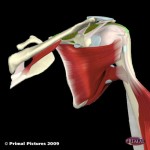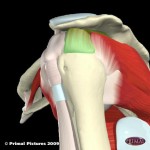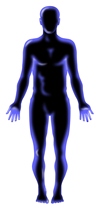Rotator Cuff Tendionopathy
Rotator Cuff Tendinopathy
What is it?
The rotator cuff is a group of four muscles that run from the shoulder blade to the top of the arm bone thus encapsulating the ball and socket joint of the shoulder (glenohumeral joint). Their primary role is to provide stability to the joint. The muscles are attached to the arm by tendons and rotator cuff tendionopathy refers to damage to one or more these tendons.
How does it happen?
Rotator cuff tendinopathy results from overuse or injury to a rotator cuff tendon. The most commonly involved tendon is that of the supraspinatus muscle. The tendon of supraspinatus runs through a small space between the top of the arm bone and the point of the shoulder known as the subacromial space. Given that this is a relatively small space, the tendon is susceptible to ‘wear and tear’. Excessive use of the tendon, adverse biomechanics or subtle changes to the shape of the bones can all cause microscopic tears within the tendon.
Rotator cuff tendinopathy results in pain felt at the top of the upper arm. This is usually felt when lifting the arm in the air and symptoms typically come on gradually. Initially, the tendon may only be painful following exercise and they may not be present during exercise. However, as you continue to participate, the tendinopathy progresses and the pain within the tendon becomes more intense and frequent. It may begin to be present during participation. In the early stages this pain may wear off during exercise only to return more prominently once you stop. As you continue to participate the damage worsens and your pain may begin to be present for longer periods until it is present each time you lift your arm.
What should you do?
Rotator cuff tendionopathy generally doesn’t get better on its own if the cause is not addressed and you continue to participate. If you have or suspect you have rotator cuff tendinopathy, you should consult a physiotherapist or musculoskeletal expert. In the meantime, you can begin initial treatment. This should consist of icing for 15-20 minutes applied by wrapping ideally crushed ice in a moist towel and can be applied several times per day.
What shouldn’t you do?
You shouldn’t ignore the problem. Your pain may get better as you exercise but the exercise may interfere with the healing process and cause further damage. If this occurs your recovery may be prolonged and it may take a number of weeks or months for you to return to normal.
Could there be any long-term effects?
There are no long term effects as long as the problem is diagnosed and treated appropriately. If not, it can lead to prolonged pain in the upper arm and a prolonged lay-off from any activities involving the shoulder.
Management
The assistance of a physiotherapist is important in the treatment of rotator cuff tendinopathy. Initially, they can assist in diagnosing the problem and its severity. From this, they will be able to determine an appropriate treatment plan. This may involve activity modification, soft-tissue treatment such as massage and stretching, and the progression through a series of specific strengthening exercises. The physiotherapist will also be able to assess and determine why you developed the rotator cuff tendinopathy and address this during your recovery to reduce the risk of re-occurrence when you return to full activity.
Disclaimer: This information is not a substitute for medical advice and you should seek professional advice from a doctor, physiotherapist or other healthcare professional.






